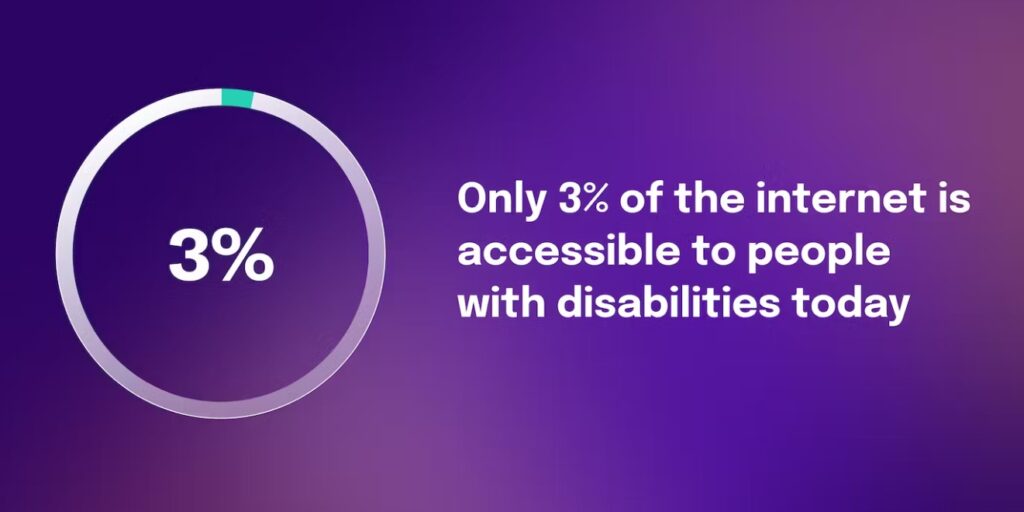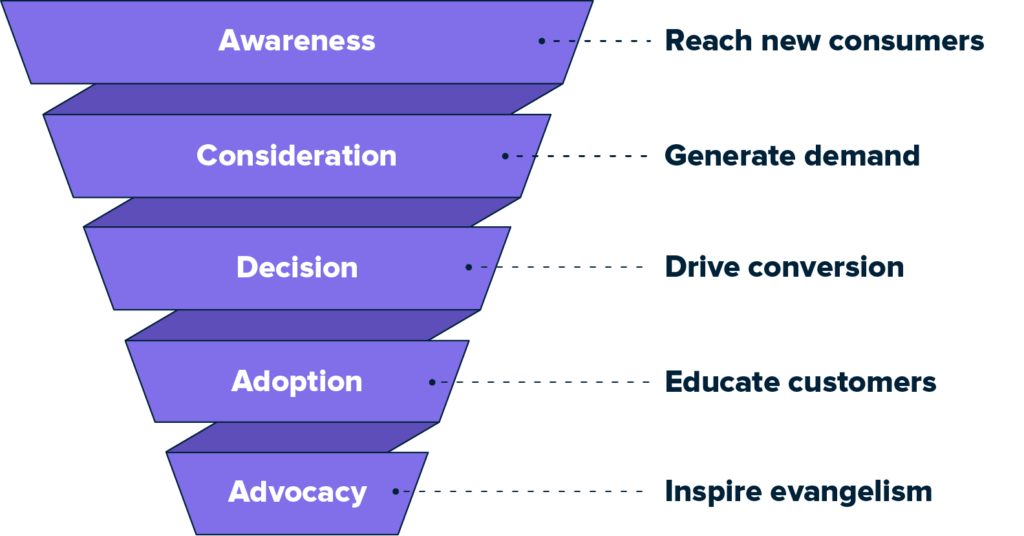Video marketing refers to the use of video content for marketing purposes to reach and connect with your target audience online. Video is the most popular content that people consume online and this is what makes it a must-have for a successful marketing strategy.
Online content has transformed from text to images to videos in the last few years. Video content is now the prevailing content type we see on the internet. And it will continue to grow.
This guide covers video marketing trends, statistics, and best practices to help you prepare your business for the future by improving your video marketing game.
Video Marketing Trends in 2024
Here are some of the top video marketing trends that make it a powerful component of content marketing strategy.
1. Increased use of video content
The use of video content has consistently increased over the years. According to Wyzowl, 91% of companies plan to use video marketing in 2024 and 88% of marketers rate it as a critical part of their marketing strategy.

The reason why brands and marketers invest in video content is that it works exceptionally well in terms of engagement and ROI. As much as 90% of marketers say that they get good ROI from video marketing and the top 3 metrics that they use to determine success include video engagement, audience engagement, and views:

As more people are using social media platforms which are mainly driven by video content. Facebook, Instagram, TikTok, YouTube, and other social networks have more video content than other forms of content. It’s because videos are more engaging and interactive than images.
Generation Z uses TikTok to search what they are looking for as it’s driven by video content and they like to see results in video form as opposed to seeing text. Google isn’t the preferred search engine of up to 74% of Gen Z because they want to see results in the form of video content.
This means a few things for marketers:
- Create more video content
- Use TikTok and other social platforms if that’s where your primary target audience is
- Don’t solely rely on Google for organic traffic. Look for other channels.
You can’t win the video marketing game with mediocre content because it’s now produced in bulk by brands and creators of all sizes across the globe. If you want to be successful with video marketing, your content needs to be much more than original and experience-driven. More on this in the next section.
2. Interactive videos are the future
One of the best ways to stand out from the crowd is by creating interactive videos. Your viewers can interact with this type of video via clicks, drags, taps, or in other forms.
Here’s an example of interactive video content:

Link to video: https://corp.kaltura.com/resources/videos/interactive-video-example-recruiting-for-deloitte/
These types of videos are highly engaging and have a higher conversion rate than conventional videos. Research shows that interactive videos increase conversion rate by 25%, traffic by 21%, leads by 18%, sales by 14%, and referrals by 11%. Consumers love interactive video as it is effective at educating them and it makes it easy for viewers to decide what to view and skip:

Not many businesses and marketers use interactive video in their video marketing strategy for multiple reasons:
- Too time-consuming to create interactive videos
- Unavailability of suitable technology and apps
- Incompatibility with some devices.
This means there is a gap that you should fill to get ahead of your competitors. You should take the lead if your competition isn’t creating interactive videos. There are several ways you can use interactive videos.
For example, you can use interactive videos on your customer support page to help customers solve their issues. Businesses that do this reported that they reduced customer service calls by 68% as it gets easier for customers to find and solve common problems by interacting with videos:
Think of ways how you can incorporate interactive videos in marketing, sales, and customer support to gain a competitive advantage over your competitors.
3. More use of AI for video creation
Artificial intelligence has simplified the creation of video content. Some apps help you generate videos for social media within a few minutes. You can convert text to video with a push of a button and fully edit videos with ease.
Around 75% of businesses are already using AI to create or edit video content and since it is quite cost-effective, 96% of businesses see a positive ROI when they use AI for video marketing:

The use of AI to create, convert, edit, and personalize videos will continue to increase and you have to start using generative AI for video marketing. It’s inevitable. You can create videos at scale for social media at a fraction of the cost. This improves the productivity of your marketing team.
Not all videos can be created by AI. You have to pick and choose smartly. There are two major types of video content that a business creates:
- Short videos for social media that aren’t branded and aren’t linked to your products. Reels, for example, you have to create Reels to reach new audiences via fun and entertaining videos. These are the types of videos that you can create through generative AI.
- Long, branded, and strategic videos that are part of your content marketing strategy. Such as product unboxing, product demos, interviews, etc. You can’t use AI to create or edit such videos.
A formal AI policy is essential for your brand’s safety. Only 10% of companies have a formal AI policy and 25% of businesses don’t have any policy for the use of AI. Start with a policy by setting clear rules and creating SOPs to avoid ending up ruining your brand’s identity and credibility.
4. YouTube will continue to be the leading platform
YouTube is the undisputed leader in videos. It is the most used and most effective video marketing channel and that’s primarily because it has a massive audience that’s hard to find elsewhere. Around 33% of the world’s population uses YouTube every month which indicates its global reach:

The good thing is that you can publish both short, AI videos and longer, personalized videos on YouTube. Standing out on YouTube is a challenge due to fierce competition. You have to create a dedicated YouTube marketing strategy that should cover the following:
- A mix of short-form and long-form video content
- Unboxing, product reviews, and tutorial videos as these are the most watched videos on YouTube
- Video SEO to attract organic visitors from YouTube and Google
- Video distribution strategy to republish and share YouTube videos on other streaming sites and social platforms
- Performance tracking and analytics to see what type of content is working best for your audience.
5. Videos will become more accessible
There is a growing need for accessibility for all types of content that’s published online. Videos aren’t too different. Your videos should be accessible across all devices and for all types of audiences.
Research shows that 71% of people stop interacting with a website if they are unable to access it. This means your videos should be accessible to visually impaired people, they should have captions enabled, and your videos should be understandable with sound turned off.
Statistics show that up to 80% of people who use captions have no impairment which shows it isn’t all about targeting differently-abled people. Conversely, up to 41% of video content is incomprehensible without sound or captions. Overall, less than 3% of the internet is accessible to people with disabilities:

This means you have to make sure your videos are accessible to all types of audiences. You have to create a mix of interactive video content and all-accessible videos. This is a bit challenging but it’ll eventually pay off in years to come.
Top Video Marketing Statistics
Here’s a list of the video marketing statistics that’ll help you get a better idea of what to expect in 2024 and how to develop a successful video marketing strategy for your brand:
- Video marketing spending is expected to reach $92 billion by the end of 2024. (SocialPilot)
- Consumers report that they retain up to 95% of the information given in a video. (SocialPilot)
- Up to 33% of all online activity is related to video consumption. (SocialPilot)
- Video accounts for as much as 82.5% of global internet traffic with an audience reach of over 92%. (DemandSage)
- 66% of people say that they find short-form videos as the most engaging form of content online. (DemandSage)
- 89% of consumers say that they have purchased a product after watching a video. (DemandSage)
- 92% of marketers are of the view that video content will play a massive role in marketing in the coming years. (Lemonlight)
- 72% of marketers say that they share 1-4 videos per month across video streaming and sharing platforms. (Lemonlight)
- LinkedIn is the most popular social platform used by marketers where they distribute video content. (Lemonlight)
- Consumers consider a video to be engaging based on two factors: Authenticity and clear messaging. (Lemonlight)
- 58% of consumers watch video content on their smartphones. (Lemonlight)
- 91% of people have watched an explainer video to get more information about a product. (Wyzowl)
- 82% of people have been convinced by a video to purchase a product or service. (Wyzowl)
- 87% of consumers trust a brand based on the quality of the video. (Wyzowl)
- Testimonial videos are the most famous video type in 2024. (Wyzowl)
Video Marketing Best Practices
Having an understanding of video marketing isn’t enough, you have to use it religiously yet accurately to grow your business. Here’s a list of the video marketing best practices for 2024 and beyond:
1. Set a clear goal
You can achieve a lot from video content ranging from brand awareness to engagement to lead generation to sales and more. Setting a clearly defined goal for every video that you create is one of the first steps to video marketing success.
It is best to have one goal per video as it helps you create a targeted and focused video.
When you try to achieve multiple things with the same video, it will confuse viewers. You’ll end up adding multiple CTAs and offers within the same video and it’ll lead you nowhere.
In the worst cases, such videos might backfire.
One goal per video is the best approach as it helps you with the following:
- Improve video conversion rate and engagement
- Track performance using the right metric
- What platform to use for video submission and distribution
- Identify the right funnel stage for targeting.
Here’s an example of a specific goal for video content: To generate leads through a free eBook by targeting new customers.
You need to group videos based on funnel stages as it helps you measure performance and cover the entire sales funnel. For example, videos targeting new customers are different from videos that are geared toward educating customers.

Just like you publish content in different forms targeting different keywords for all buyer personas you target, the same should be followed for videos. It will help you improve video marketing campaigns and strategy to a great extent.
2. Create high quality videos
People’s perception of your brand and product depends on the quality of the video. Around 87% of consumers say that video quality impacts their trust in a brand:

A study reported that video quality has a significant impact on user engagement. Factors like buffering time, average bitrate, buffering even rate, and rendering quality are all related to user engagement. A 1% increase in buffering ratio can lower engagement by over 3 minutes for a 90-minute live video. Other factors had a similar impact on engagement but buffering ratio was found to have the highest negative impact.
You have to consider all the quality factors when creating and publishing videos.
A major dilemma video marketers face is related to video quality vs. buffering ratio. A high-quality video takes time to buffer which leads to lower engagement and high bounce rate. You have to find the right mix of quality and video size. Keep video size reasonable so it buffers quickly.
Follow these tips and best practices to improve video quality:
- Use professional equipment for video recording and editing. Avoid creating videos from mobile phones.
- Record in 4K as these videos have 4x more pixels than HD videos and the quality is great.
- Keep the frame rate between 24 and 30. This is the ideal range that works for almost all the platforms. Most platforms, like Meta, don’t stream live videos that have fps higher than 30.
- Use the right video format. MP4 is the best format which works across all devices and has a quick buffer time. WebM is also a decent choice that offers buffer-free compression.
- Edit videos religiously. The final video should be concise, error-free, and fluff-free. Create editorial standards and ensure that all the videos go through a systematic editing process. This ensures that videos have the same format, standard, and quality.
- Focus on sound quality. Have quality, professional microphone and audio devices. If you outsource voiceover, make sure that you get crystal clear output from the artist.
- Use the right lightning technique. One of the best techniques is to use key light, fill light, and backlight for best results.
- Visual elements should be used appropriately and in the right proportion. For example, the title and captions shouldn’t cover the entire screen and there must be a smooth transition between frames.

3. Distribute videos across channels
Republishing and sharing video content across multiple social media sites and video streaming platforms help you reach new audiences that are otherwise impossible to reach.
Generally, when you create video content with a targeted approach, you define what platform it will be published on. And that’s great because it helps you improve your target and be where your ideal customers are.
But don’t just stop there.
If your ideal customers use YouTube and you publish videos on your channel, it’s a good idea to republish those videos to other platforms such as Meta, Dailymotion, Vimeo, TikTok, LinkedIn, and several others.
Video distribution offers some major benefits:
- You can reach a new audience at potentially zero cost
- It increases your reach significantly
- You can test new channels
- It helps you improve brand awareness, brand visibility, and brand recall
- More data and analytics help enrich buyer personas.
Video distribution should be a part of your video marketing strategy. You can republish a single video on hundreds of platforms at zero cost.
Here’s a list of leading video distribution channels to help you get started:
- Your website and blog
- Landing pages
- Email marketing campaigns
- Paid ads
- Dedicated video library on your website
- Twitch
- Meta
- YouTube
- Vimeo
- Dailymotion
- TikTok
- Gumlet
- 9GAG
- Crackle
- Utreon
- The Open Video Project
- DTube
- The Internet Archive.
4. Make videos accessible
Accessibility is much more than a debate. It is real and you have to prepare your business and content for it. More than 72% of adults with disabilities own and use a smartphone and 60% of US disabled persons have access to the internet.
They have access to the videos and you need to make sure these people can watch and understand your videos without issues.

This has a few key benefits including:
- Wider reach
- Improves UX for all viewers. People without disabilities can access video with sound off so you have to keep your content prepared for all types of situations
- You’ll save your brand from lawsuits and fines. A total of 2,281 website accessibility lawsuits were filed in 2023. The number of accessibility lawsuits increases every year.
Video accessibility is super-easy and cost-effective. The key things you need to do include captions and transcripts. This is to ensure that people with visual disabilities can use screen reading devices to hear what the video is about. Similarly, people with hearing disabilities can understand video via closed captions.
These changes make your videos user-friendly for your conventional audience as well. Research shows that up to 85% of millennials and 64% of Gen X watch videos on mute. Imagine if your videos don’t have captions, it’ll get extremely tough for someone who watches videos on mute to understand your content, right?
This ruins UX and brand reputation.
Even if you are not explicitly targeting people with disabilities, you should incorporate the following accessibility features into your video content:
- Add closed and open captions
- Add transcript with your video
- Use media alternative transcript if you target disabled people as it helps them better understand the actual content of the video
- Use audio descriptions for people who have visual disabilities.
5. Use numbers and data
Not all videos and platforms work equally well. You have to find the best video format, type, length, and platform for each buyer persona.
For example, one buyer persona might be more interested in unboxing videos that you publish on YouTube while another persona might be interested in seeing entertaining Reels.
It calls for in-depth analysis. Most marketers don’t give due importance to video analytics. They don’t use advanced tracking to attribute traffic, leads, and sales. Having an attribution system with advanced tracking lets you monitor the entire journey of a customer/visitor and you can analyze all the touchpoints.
For example, tracking can help you see the complete journey of a new customer from start to finish. You know the first touchpoint and then subsequent interactions with your brand (including video and non-video).
Basic analytics isn’t usually enough. It shows you basic metrics like impressions, watch time, engagement, etc. These metrics don’t represent the complete picture as you can’t measure how many people converted after watching a specific video.
You can set up an attribution model in Google Analytics or you can use a dedicated tool like Mixpanel or Kissmetrics.
This data will help you refine your video marketing strategy and you’ll be in a better position to understand your audience.
Get Ready for Action
Video marketing isn’t all about YouTube. Most marketers restrict themselves to YouTube for video marketing. It is the leading video streaming site and one of the most visited sites in the world, but video marketing is much more than having a YouTube channel.
Don’t restrict yourself to YouTube or a few social platforms.
Video marketing strategy should include creating, publishing, distributing, measuring, and improving. Focus more on distributing videos and you’ll see how much you have been missing.
Ready, set, action…
Featured Image: Pexels



